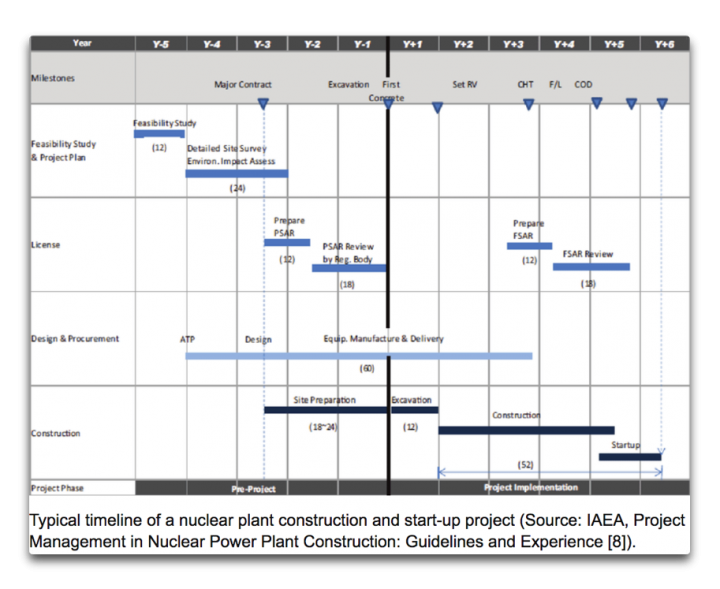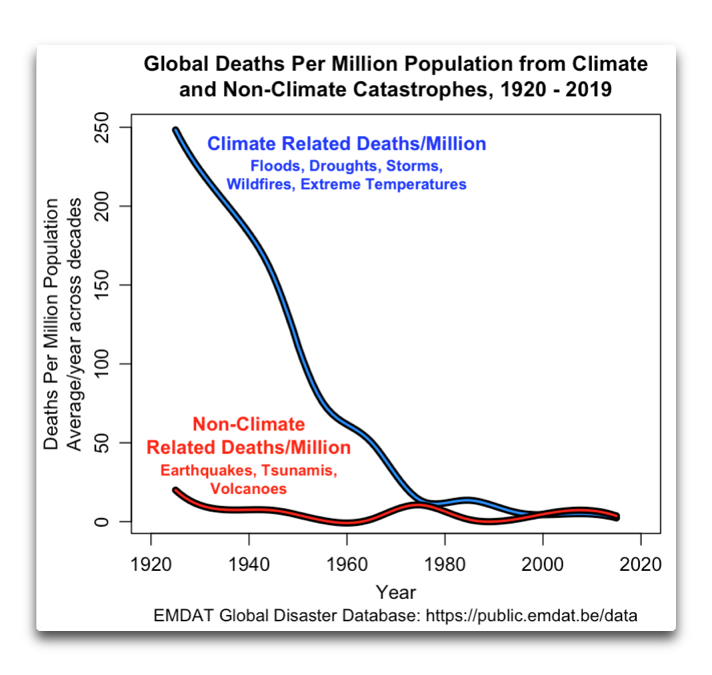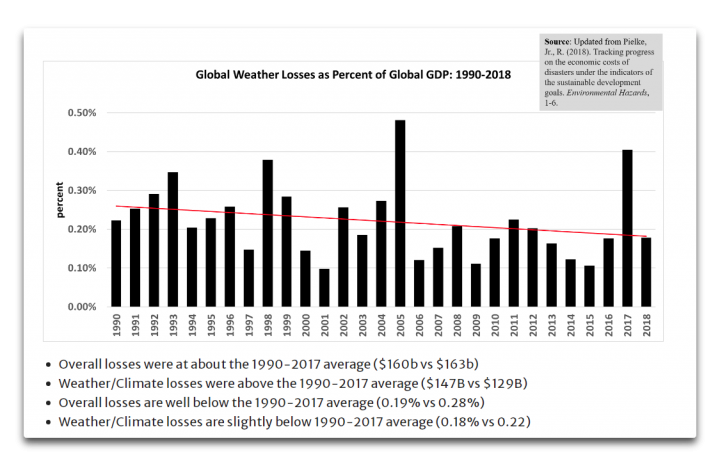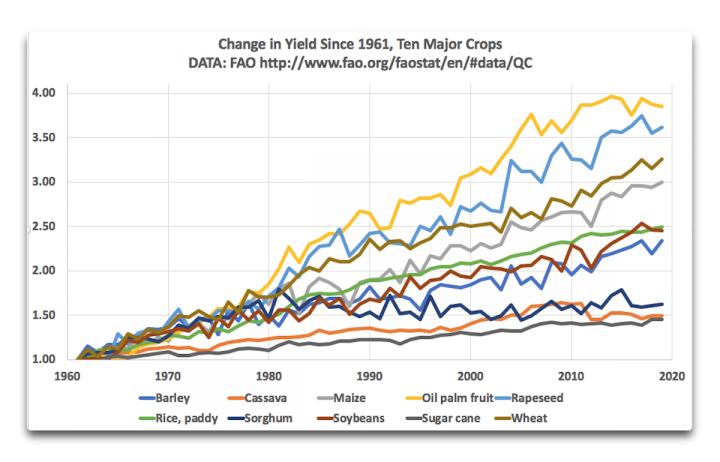Whats in a Name Thats Basically a Number by Joel Sachs Artsleisure
Guest Post by Willis Eschenbach
I see that Joe Biden is nigh to propose a new CO2 goal. This goal would be to get down to half of the 2005 CO2 emissions by 2030. So I thought I'd see what that would entail.
In 2005, the U.s. emitted almost exactly half dozen,000 megatonnes (MT, a million metric tonnes) of CO2. Unlike in near countries, The states CO2 emissions have been dropping since 2005, and we're currently at nigh 4,900 MT per twelvemonth. To meet the fantasy goal, nosotros'd need to reduce our CO2 emissions past 1,900 MT of CO2 per year. (Note that this doesn't mean reduce them by 1,900 MT every year. We need to reduce them by a total of 1900 MT/year.)
Now, the corporeality of CO2 emitted per petawatt hour (PWh, or 10^15 watthours) of US fossil energy consumption has been dropping slowly since about 2009. Currently, we emit well-nigh 213 MT of CO2 per PWh of fossil fuel used for free energy. The average over the next nine years, if the tendency continues, volition be about 208 MT of CO2 per PWh.
This means nosotros need to replace virtually 1,900 MT CO2 / 208 MT CO2 per PWh ≈ ix PWh of fossil free energy by 2030.
The just emissions-free source currently available to replace that with is nuclear power. Nosotros tin can add together current of air/solar to the mix if nosotros want, but every bit Texas and Germany have recently shown, we all the same have to have a full backup for those times when the wind dies and the sun sets. Nuclear isn't ideal for that, simply the modern modular units promise greater flexibility in that regard.
At present we demand to calculate the nuclear generation capacity nosotros need. To do that, we divide the 9 PWh/year of power we need to supply by the number of hours per year, 8,760. This gives us about 1,030 GW (gigawatts, x^9 watts) of new nuclear generation capacity needed.
But in that location's a hitch. That's average generation capacity … but we need enough generation capacity for the height times, non just the average times. I can't do better than to quote a commenter from a previous mail service:
I retrieve you missed something, Willis
That 22 TW is average power. But generating plants, transmission facilities, transformers, circuit interrupters, and all that stuff, must be sized for the Top demand.
Most distribution systems in the U.s.a. have a peak to average (PtA) ratio of around 1.6 to 1.7. Except for the New England ISO which is running around ane.eight. Some systems in Australia have an almanac PtA ratio of around 2.3. I expect Arizona would run that high taken in isolation, which, of grade, it never is.
Take 1.8 equally an estimated overall PtA ratio, you demand to run into a peak demand of 22 * 1.7 terawatts or 37.4 TW.
But no ability arrangement can survive with generation equal to demand. So add fifteen% for reserves for when parts of the organization are downward because of maintenance, failures, or the like. The result is, you need top generation of 43 TW. So roughly double all of your numbers as to what needs to exist built.
Every bit a issue, rather than ane,030 GW of new nuclear generating capacity, we need twice that, or two,060 GW of new capacity.
Adjacent, from today until Jan 1st, 2030, when Biden's plan calls for our emissions to be down to 3,000 MT of CO2 per yr, there are about 454 weeks.
And that means we need to detect sites, practice the feasibility studies, get the licenses and the permits, excavate, manufacture, install, exam, and committee 2 2.25 gigawatt nuclear power plants EVERY WEEK UNTIL 2030, STARTING THIS Calendar week.
To give you lot an idea of how absolutely ridiculous the thought is of adding two nuclear ability plants per week to the grid, the typical time from feasibility written report to connectedness to the grid for nuclear plants is on the order of 10 or eleven years. Here's an overview of the timeline.

Figure i. Typical nuclear plant timeline, from initial study to final startup. SOURCE.
Finally, switching from direct use of fossil fuels to using electricity will be hugely expensive. Nuclear plants typically cost on the social club of seven billion dollars per gigawatt … and since we need 2,060 gigawatts of new nuclear generating chapters, that's almost $xiv trillion dollars with a T …
How big is a trillion dollars? If your family had started a business organisation when Jesus was born, and it made a million dollars a twenty-four hours from then until at present … you still wouldn't have made a trillion dollars. A 1000000 bucks a day for 2,000 years … less than a trillion.
Only await, as they say on TV, in that location's more to this wonderful bargain. Switching from straight burning of fossil fuels to using electricity would mean we'd have to upgrade our entire electrical transmission network, including substations, switches, transmission lines, transformers, and wiring both to and inside each house. And then every house like mine would need new electrical stoves, water heaters, and space heaters … tin I say how much I dislike cooking on an electrical stove? And who volition pay for my new stove?
Conclusion? This is just another liberal ecoloonical bright thought. This plan is just like your child putting on a cape, insisting he can soar through the air similar Superman, and jumping off the roof …
… it's never gonna fly, and someone's gonna become hurt bad …
Allow me shut past pointing out an underlying reality regarding all of this. Despite my asking over and over in a host of forums, to engagement, nobody has been able to tell me just what this supposed "CLIMATE EMERGENCY" actually is and where I might observe evidence that information technology exists.
Deaths from climate-related phenomena are at an all-time low. If you think deaths from climate catastrophes are an emergency, delight bespeak in the graph beneath to the start of the "emergency".

Storminess has non gone up, and there'southward been no increment in hurricane forcefulness or frequency … no "emergency" at that place.

Even the IPCC says there's simply one take a chance in five ("low confidence") that global droughts are increasing. Nor accept the "wet areas been getting wetter and the dry areas getting drier". No overflowing or drought emergency.

Global weather disaster losses every bit a percent of avails at chance (global Gdp) are decreasing , non increasing.

Tide gauges evidence no increment in the rate of sea-level rise, and the claimed acceleration in satellite-measured sea level is just an antiquity of irresolute satellites.

Yields of all major food crops continue to rise, and humans are improve fed, clothed, and housed against the vagaries of weather condition than at any time in the past.

Land temperatures have already risen more than the dreaded 2°C, with no cataclysmic consequences … so no historical "climate emergency" despite temperature increases.

There has been no global increase in the number of wildfires … here'south the NASA satellite data.

Finally, an "emergency" is defined as "a serious, unexpected, and ofttimes unsafe situation requiring firsthand action." Alarmists take been alarm u.s. over and over about this for 50 years, none of their doomcasts have come up truthful, and no significant activeness has been taken … so by definition, it can't be an emergency.

So before we spend trillions of dollars on an unachievable program to totally redo the entire US energy supply, how about we expect until someone tin can actually let us in on the big secret—simply where is this mysterious "CLIMATE EMERGENCY!!!", and when did it offset?
A last annotation: temperature changes with distance, at a rate of about 1°C per 100 metres (v.five°F per yard anxiety). Fifty-fifty if nosotros could magically cut our emissions to cypher tomorrow, and IF (large if) the "CO2 roolz temperature" theory is correct, cutting U.s.a. emissions to zero would cool the world in 2050 by nigh as much cooler equally you'd get if you climbed up three flights of stairs … run into my post "Going To Zero" for the details.
So what is existence proposed past our "President" is a meaningless gesture which is incommunicable to reach, and even if it could exist achieved would do aught to solve an imaginary "emergency" …
… how the mighty have fallen. We used to fight and win existent wars against bodily enemies. Now we tin't even win fake wars against imaginary enemies.
Here on our lovely hillside in the woods, I spent the 24-hour interval putting new handles on a shovel, a pitchfork, and a hoe. I was successful in 2 out of the three. Frustrated, I took my chainsaw and continued the endless task of reducing the fuel load in the forest around our house. There, I was quite successful in cut and hauling brush and tree trunks, and I likewise returned with the requisite number fingers and toes … life is good.
My very best wishes to all,
westward.
USUAL Request: When you comment delight quote the exact words you are discussing. I can defend my ain words. I can't defend your estimation of my words.
Data SOURCES: Usa energy consumption is from the U.s.a. Energy Data Agency, under "Energy Overview : Principal Energy Consumption By Source.
CO2 emissions are also from the US Energy Information Bureau, under "Summary : U.S. Carbon dioxide emissions from energy consumption.
Source: https://wattsupwiththat.com/2021/04/21/the-latest-co2-fantasy/
0 Response to "Whats in a Name Thats Basically a Number by Joel Sachs Artsleisure"
Post a Comment